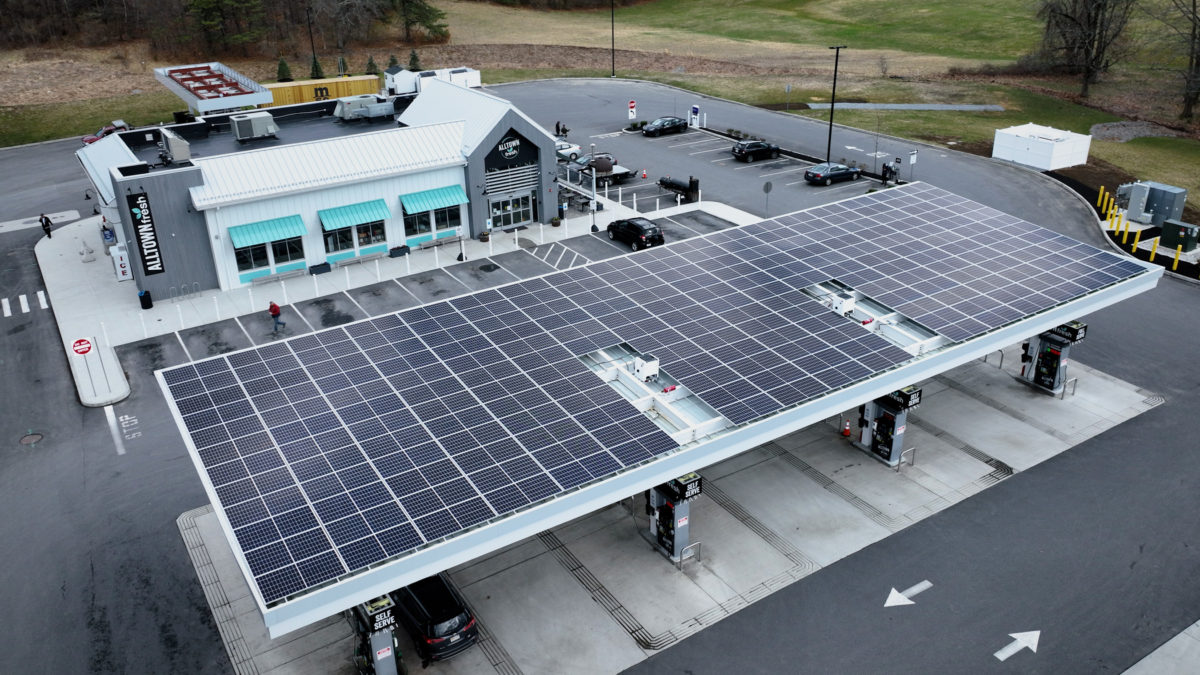The U.S. microgrid market reached 10 GW in the third quarter of 2022, with more than 7 GW in operation and the rest in planning or construction stages, according to latest analysis from Wood Mackenzie’s Grid Edge Service.
Microgrids are groups of distributed energy resources, such as solar modules on a home, connected to a battery system, that can disconnect from the grid and operate independently during a power outage.
“Despite the global COVID-19 pandemic and associated macroeconomic challenges causing a two-year slowdown in the U.S., the microgrid market is developing at a rapid pace and 2022 is on track to be a record year for installations and scheduled pipelines,” said Elham Akhavan, senior research analyst at Wood Mackenzie.
Akhavan noted that microgrids are installed across various customer segments, with commercial and industrial leading the way. Microgrids are embraced in industries such as department stores and manufacturing, “indicating a rise in demand for an uninterrupted service,” he said, adding that the government sector takes second place, followed closely by residential and education sectors.
Military microgrid installations will likely grow as a result of the U.S. Army’s resiliency goal to install a microgrid on every installation by 2035. These will include renewable generation and large-scale battery storage, with the goal being able to “self-sustain its critical missions” on all Army installations by 2040.
According to Wood Mackenzie data, the U.S. microgrid market saw a 47% increase in solar and storage capacity additions in 2022 compared to 2017 levels. Moreover, the data shows that more than 175 solar projects and solar-plus-storage microgrids have been in active development and were scheduled to come online by the end of 2022.
“There’s been a significant shift in technology type, in particular the rise of solar and storage demand among microgrid customers, largely driven by corporate ESG goals,” Akhavan said. He noted that there’s been an uptake of “multi-distributed energy resource (DER) microgrids,” which may include a fossil fuel generator that acts as a backup power generator in cases where solar and batteries alone cannot mitigate long-duration outages.
Business models
The microgrid-as-a-service (MaaS) business model is projected to experience continued growth across various non-utility customer segments, and according to Wood Mackenzie’s data, the share of MaaS deals grew 25% from 2019 to Q3 2022, while the percentage of microgrids owned by end-users dropped 31% from 2019 to Q3 2022.
“While third-party financing in general is not a new model, MaaS is evolving beyond PPA contracts, which often involves procurement from a single DER to an affordable solution for financing the construction, operation and maintenance of multiple DERs, tailored to the customer’s energy objectives,” Akhavan added.
Wood Mackenzie data shows that there are 28 states with utility microgrids, with approximately 35 MW of projects expected to have come online in 2022. This implies total utility microgrid capacity of over 1.1 GW.
“Although utilities typically look to rate-base microgrids, some are partnering with developers to offer microgrids to their customers under MaaS agreements,” said Akhavan said. “For example, Enchanted Rock announced a utility partnership program in early 2022 that enables utilities to offer comprehensive ‘resilience-as-a-service’ to its customers.” Enchanted Rock deploys commercial-scale microgrids that use natural gas and renewable natural gas (RNG) to reduce carbon emissions and pollutants found in traditional diesel generators.
Akhavan estimates that we will see more than 20% growth in annual capacity installation of microgrids, if the market continues on its current trajectory. The industry has seen growth in the Northeast where a range of competitive grant programs are supporting resilience projects for critical facilities.
“The West Coast, led by California, is growing substantially, with a strong pipeline due to go into operation by 2024. This is followed closely by the Southwest market, which has expanded more than three times since 2019. Texas is the frontrunner, with two of the leading developers in the region, PowerSecure and Enchanted Rock, having installed all capacity so far in 2022,” Akhavan added.
This content is protected by copyright and may not be reused. If you want to cooperate with us and would like to reuse some of our content, please contact: editors@pv-magazine.com.









By submitting this form you agree to pv magazine using your data for the purposes of publishing your comment.
Your personal data will only be disclosed or otherwise transmitted to third parties for the purposes of spam filtering or if this is necessary for technical maintenance of the website. Any other transfer to third parties will not take place unless this is justified on the basis of applicable data protection regulations or if pv magazine is legally obliged to do so.
You may revoke this consent at any time with effect for the future, in which case your personal data will be deleted immediately. Otherwise, your data will be deleted if pv magazine has processed your request or the purpose of data storage is fulfilled.
Further information on data privacy can be found in our Data Protection Policy.